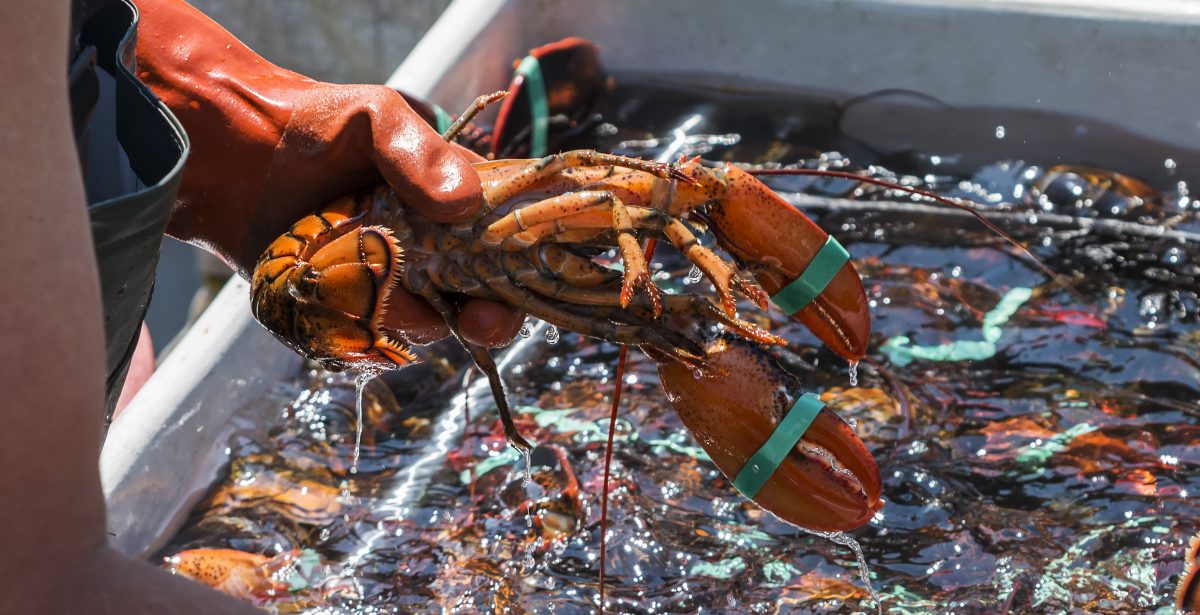The Realities of the Shrimp and Lobster Industry
Many people resort to seafood as a source of protein that is more sustainable than land-based meat. For the most part, this is accurate – seafood such as Spanish mussels, North-East Atlantic Mackerel, and Baltic herring all have emissions as low as one kilogram of CO2 per edible kilogram, which is significantly less than the beef industry’s average of 36 kg of CO2 per edible kg of beef. These figures, however, are completely dependent on the producer, so they vary greatly across the board for both seafood and land-based meat.
Crustaceans as a whole account for 22% of global CO2 emissions in the fishing industry, while comprising only 6% of all tonnage landed. Emissions in this sector have been increasing rapidly in the past two decades as a result of high demand for luxury seafood. In 2011, the number of crustaceans caught was 60% higher than in 1990. Demand has increased because of rising global income, with more people willing to spend a few extra dollars on luxury food products. Unfortunately, because of unsustainable practices and aggressive fishing/production, these few extra dollars equate to thousands of kilograms of extra carbon emissions.
How can the industry reduce its ecological impact?
Improving technologies and instituting and enforcing regulations could greatly reduce carbon emissions from crustacean fisheries. NGOs like the World Wildlife Fund have taken steps to ensure sustainable practices in farmed shrimp by developing standards and working closely with the Aquaculture Stewardship Council (ASC) to ensure field testing in these facilities. American lobster certified by the Marine Stewardship Council, is also tracked along the supply chain to make sure it is sustainably harvested. Small, local farms and fisheries should make it a priority to deliver products that do not compromise the environment or cause harm to marine species.
Certain establishments have taken the lead in this endeavor. For example, Caribbean Sustainable Fisheries has eliminated harmful bottom trawling in their process and grows Caribbean spiny lobster in an on land, salt-water facility through a fully-operational modular farm, complete with growing tanks, water filtration and circulation systems, unique feeding systems and laboratory. Other organizations have found ways to integrate mangrove reforestation into aquaculture practices.
That being said, there is much more work to be done. Wetland ecosystems and mangrove areas worldwide should be protected by local governments to preserve biodiversity and prohibit destruction. Furthermore, consumer education around what it takes to produce species like lobster and shrimp and the environmental drawbacks involved must become more widely recognized.
How can you make an impact?
There are ways to create positive change and consumers who are well informed must not feel discourage or overwhelmed. Instead, we can use our knowledge to impact change.
- Spread the word! Many people are unaware of the impacts of crustacean fisheries. The best thing you can do is tell as many people as possible and hope to curb demand – people should know how their seafood is sourced in order to make the most informed decision.
- Advocate for mangrove and wetland ecosystem restoration, as well as marine ecosystem restoration for areas that have suffered a loss due to trawling.
- Avoid shrimp and lobster from India, Southeast Asia, and parts of South America. These places have the least sustainable fishing methods across the board, though especially when it comes to shrimp and lobster.
- Even better, reduce your intake of lobster and shrimp, opting only for sustainably sourced and certified sources, plant-based versions or cell-cultured versions when available.
- Start going to a local fishmonger that you can trust. Small, local fishers tend to have more ethical and sustainable methods of fishing.
- You can also opt for other types of seafood; smaller, large-school fish such as anchovies and mackerels have the best environmental “report card.” Seafood Watch can help inform your purchasing decisions.
- Your vote matters. Vote for leaders who make fishery sustainability a priority on their political agendas.
